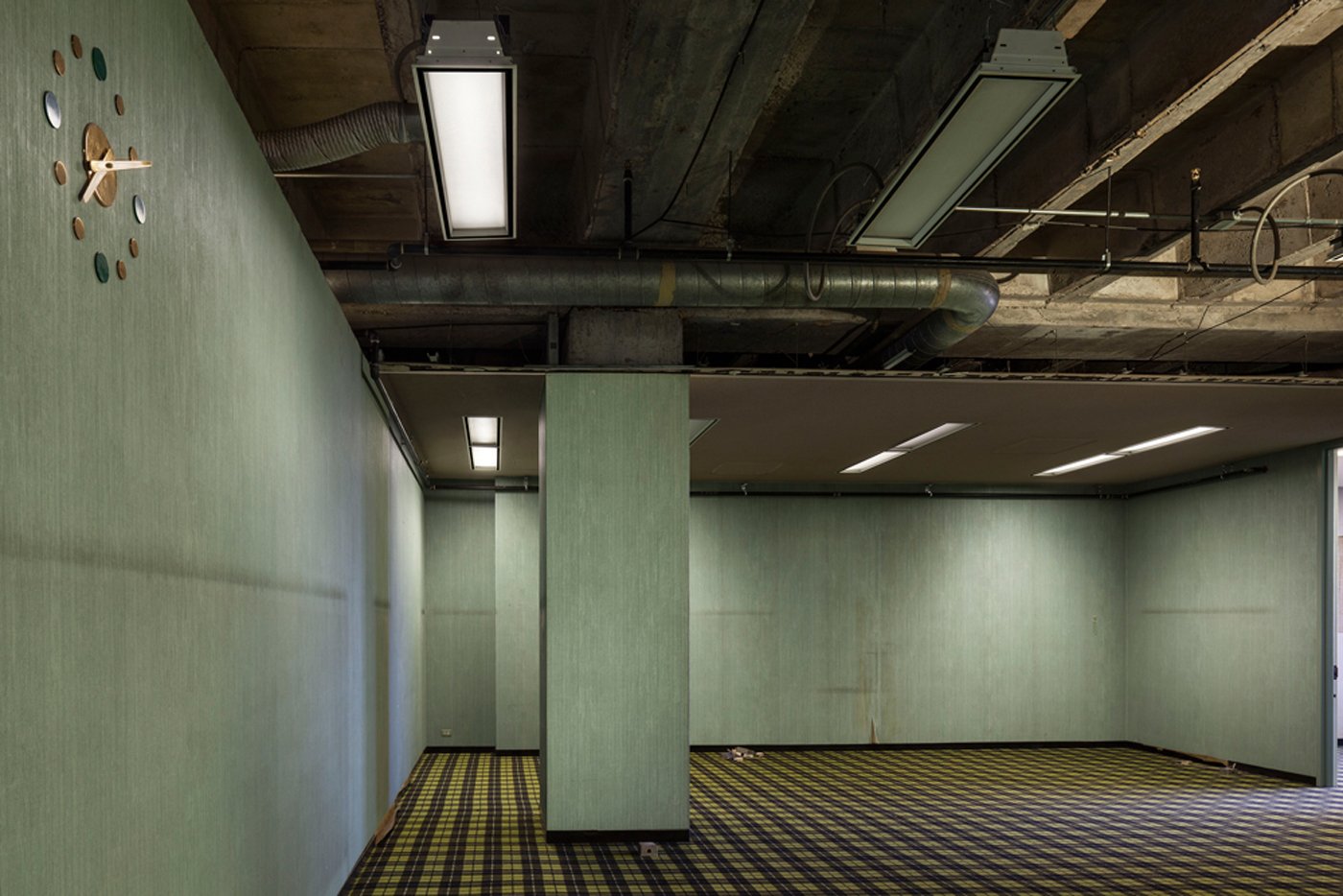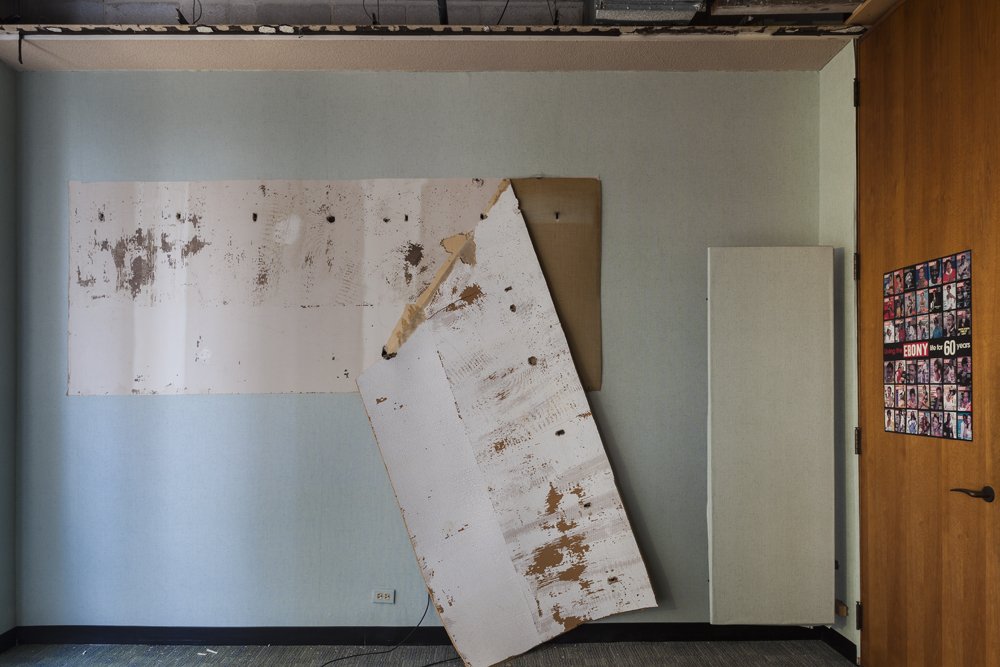




-
"Every floor is different, and every floor has surprises.” — John H. Johnson, former CEO Johnson Publishing Company
This project documents the cultural essence of the Johnson Publishing Company (JPC), the largest and most influential Black owned corporation of its day. Founded in 1942 by John H. Johnson, the major international media and cosmetics empire that included EBONY and JET magazines, Fashion Fair Cosmetics, and the Ebony Fashion Fair moved into their Michigan Avenue headquarters in 1971. These lively and original interiors fostered the creativity of a staff working in a variety of media venues.
The Johnson Publishing Company’s 110,000 square foot office tower was the first major headquarters in Chicago’s loop constructed by John Moutoussamy, a Black architect and purpose built for a Black owned business. The interior environment was created by Arthur Elrod and William Raiser, two Palm Springs designers known for their flamboyant and colorful appointments. Although the space was in disuse and in some cases disrepair, these remarkable interiors still echoed the original message of JPC founder John H. Johnson’s vision of what a mid-twentieth century Black company could be.
Because of their extraordinary commitment to their brand and mission, JPC maintained, but never changed the style of their singular work environment. Unaltered for more than forty years, the Johnson Building was a genuine cultural time capsule of Black enterprise: a specific stylistic vocabulary that has survived the passage of the decades. 820 South Michigan Avenue stripped of its furnishings, presented a unique opportunity: to document the resonant interiors of its long-time occupant—interiors that simultaneously represent the spirit of this landmark company and the sense of its loss, of a seminal moment in Black history and the history of this nation.
Addendum:
The 820 South Michigan building was landmarked and subsequently sold to developers at the end of 2017. It has undergone a complete interior renovation, culminating in 150 residential units with adjacent retail space. The Johnson Publishing Company’s remarkable interior no longer exists. With these 1970s interiors completely gone, my images are a critical documentation of this vital part of cultural history — and a singular document capturing the space after the company departed and before the interiors were demolished.A book is currently in design and will be published in early 2026
-
The photographs are limited edition, archival pigment prints sized at 14.5x21.5 or 20x30. Larger sizes are available upon request.
